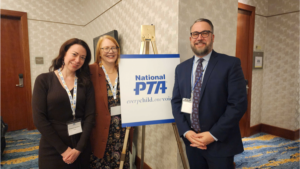September 30, 2014
by: Gari Lister
I am delighted to be able to share some thoughts on the very substantive and insightful interview of Joel Ristuccia, Ed.M, from the Massachusetts Advocates for Children, Trauma and Learning Policy Initiative. His interview was presented as part of ATN’s Educating Traumatized Children Summit.
Joel Ristuccia: Impact of Trauma on a Child’s Ability to Learn
In his interview with Ken Huey, Ph.D., the Founder of CALO and an ATN Board member, Joel Ristuccia explains how trauma impacts learning and how school personnel must work together to become trauma sensitive. Like Dr. Anda, he first notes the enormous number of children affected by trauma. He posits that, if anything, the ACE study understates the truth reality because the study ignores many potentially traumatic experiences (homelessness, neglect, acrimonious divorce). He also points out one critical thing everyone needs to understand about trauma: what defines trauma is not the event, but how we respond.
Mr. Ristuccia walks through some of the effects of trauma on children and on their brains. He points out that trauma can affect the size of a child’s brain systems and how the children use their brains. Thus, he typically sees deficiencies in core language skills, meaning the ability to communicate both through the spoken and written word (including the ability to read);memory skills, especially sequential memory;and the very process of learning (executive function skills).
How do these deficiencies reveal themselves? He tells anecdotes that bring home what children affected by trauma might look like in a classroom. I found his anecdotes extremely powerful because they really do tell the story of what life is like for a child who comes from a hard place. Here’s a summary of one:
Imagine children coming into a classroom and the typical noise that accompanies that — children chatting, banging books, a teacher trying to get their attention. Imagine one child who comes to the room and isn’t talking but is instead automatically checking to see if there are any threats. He’s scanning the room, checking everything that is happening, listening to sounds of the children talking and the tone of the teacher’s voice. Once he finally settles down, he looks down at his desk and realizes there is a worksheet and he has no idea what to do with it — he didn’t hear anything the teacher said when she explained the project. He didn’t miss the explanation because he wasn’t paying attention (although often he might have been diagnosed as ADHD because of this problem); instead, he missed the explanation because he was paying attention to the wrong things.
So how might he react? Mr. Ristuccia notes that in an ideal world, the child would ask the teacher to explain again. But instead, some children might react in anger – they might rip up the page and refuse to do work because it’s the only way they can keep some control. Teachers will recognize these reactive children because they present a behavioral challenge in the classroom. But other children might look at a neighbor, or try to figure out the sheet because they recognize certain parts of it, and these are the kids who develop splinter skills, meaning they understand enough to get by, but not enough to gain a true educational framework. Neither group of kids is learning what they are supposed to learn; they are, instead, just getting through the class and the day.
Another powerful anecdote Mr. Ristuccia told dealt with a child who according to his teacher “was just not paying attention that day:”
The child eventually explained that he could hear construction equipment — a low sound that the adults were only barely aware of — and that he was worrying that the construction might dig, hit a gas line and blow up the school. Why? Because the week before elsewhere in the city a construction company had accidentally hit a gas line which blew up a building [and the child had learned about it in the news]. The problem was solved by bringing the child to meet the construction worker, who explained that he wasn’t digging, so there was no risk of hitting a gas line. And the child was able to focus the rest of the day.
So how do schools help these children who are so sensitive to their surroundings? Mr. Ristuccia says schools need to do three things:
- Schools need to get educated about trauma; they need to spend the time to become trauma sensitive.
- Schools need to think about the whole child — not just whether they can read and write, but also how they regulate, how they relate to others, and even their physical well-being.
- Schools need to help children feel safe because most difficulties occur because of a real or perceived threat. To feel safe, children need structure and predictability, but they also need connection and relationships; schools need to work to help children become an integrated part of the community.
Mr. Ristuccia has many materials available for FREE on how teachers and schools can create a trauma sensitive school; he suggests teachers should read volume 1 of Helping Traumatized Children Learn and the first chapter of volume 2 of Helping Traumatized Children Learn. Both are available on his website at no charge.


